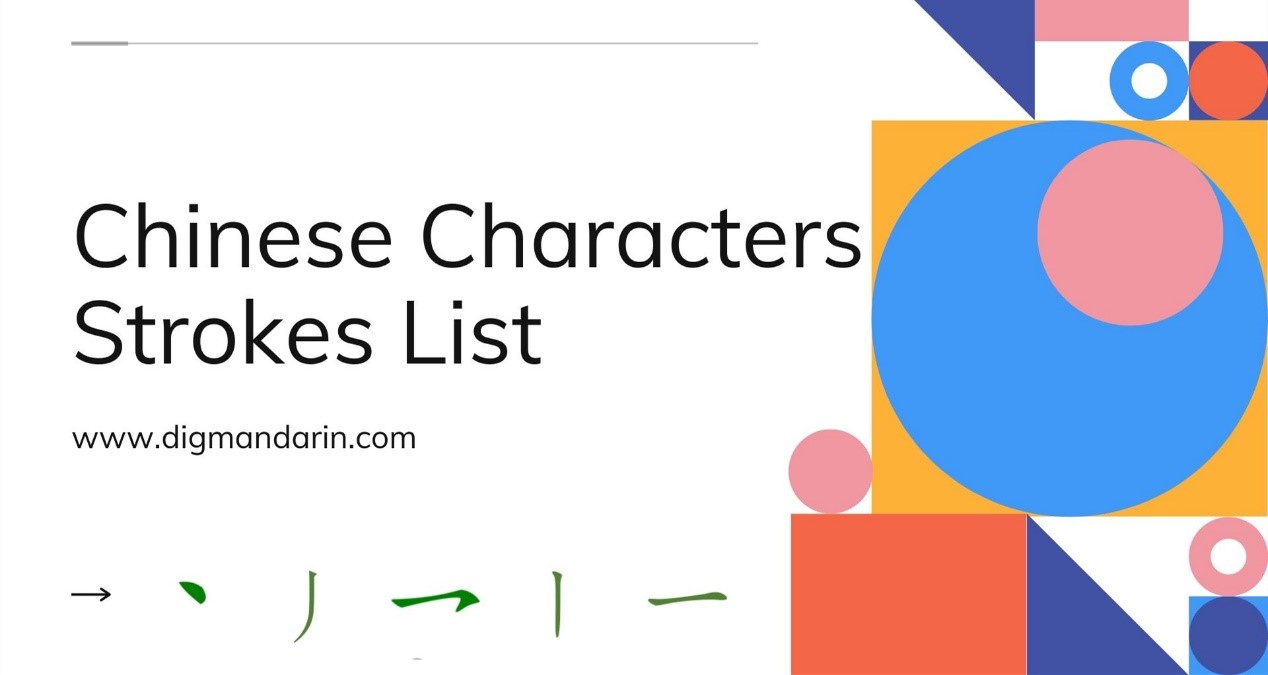Chinese Etymology – Learning the Origins of Chinese Characters Makes Them Impossible to Forget
The number one rule for truly learning something is understanding it.
Chinese Etymology is the study of the origin of Chinese characters. The more knowledge you can apply to a character, such as 泉, the more you understand that character.
The more likely you are to never forget it.
In this article, we’ll break down 水, 泉, 冰, 永 and analyse the etymology of these characters.
You’ll never get them confused again!
Chinese Etymology in Practice
The formation of Chinese characters has been a long process, thousands of years in the making.
Ancient Chinese scripts relied much more heavily on pictographs: visual representations of a word, similar to Egyptian hieroglyphics.
Over time, ancient Chinese scripts were corrupted and simplified into their modern-day equivalents.
By undoing the corruption and simplification of ancient Chinese scripts, you can see that, actually, the modern day version makes perfect sense.
A Chinese character’s origin is often the key to understanding its true meaning.

Ancient men didn’t get water from a tap. They collected it from rivers and streams.
At a glance, 水 has absolutely no relation to the word water.
Whoever invented a character to represent the word ‘water’ had to rely on imagery common at that time.
Depicted on the far left of the image above is the earliest representation of a Chinese character for ‘water’. It’s a pictograph of a river.
The middle line represents the deeper middle section of a river. The edges represent the shallower areas where water rushes over rocks or other obstacles, creating waves and white water.
Over time, these attributes have been simplified. By comparing the origin of this Chinese character to the modern-day version, 水 becomes a very meaningful symbol.
The deep, rushing core of the river and its turbulent outer edges.
Pretty neat.
Etymology of Chinese character 泉

Let’s consider the character 泉 (quán) spring.
There are a few ways to deepen your understanding of this character.
For example, we can break it into its components:
白 (bái) white
水 (shuǐ) water
White water alone gives us a clue to the combined meaning. After all, a spring in nature is a clean, pure (white) source of water.
Let’s dive deeper.

The history of the character 白 also gives us a clue to its meaning.
In the ancient 甲骨文 (jiǎ gǔ wén) oracle bone script, 白 is drawn as 日 (rì) sun with a drop on top.
Despite 3000+ years of meddling, it has pretty much stayed like that.
Some think the ancient Chinese script symbolises the time just before the sun peeps over the horizon when the area of sky above the sun is briefly cast a brilliant white.
It could also represent the bright white light cast at the entrance of a cave.
Either way, it’s clear that the sun here is used to depict white light.
Our brains like patterns. They don’t like randomness. We’re building stories and meaning (understandable patterns) into these characters.
They are no longer squiggles on a page, or even a sequence of strokes. Chinese etymology helps build a stronger story for our mind.

So we now know both components of 泉 (quán) spring. Cool.
How do they work together?
Well actually, they don’t.
I mentioned corruption earlier. This can be seen in the history of the character 泉.
If we look at the oracle bone script here, 泉 is beautifully depicted as a river or stream (notice the same oracle bone character as 水) running out of an opening or cave in the ground.
This makes perfect sense.
A spring begins life as rainwater. Once fallen, it finds its way underground, eventually reemerging from an underground opening.
This opening is often seen from above as cracks between rocks, which water appears to rise up (or spring) from.
So here you can see a cavern-like opening which water flows out from: a spring.
Understanding both the modern components (水 and 白) and their origins gives your brain multiple stories to work with, understand and remember.
It also allows you to undo history and return 泉 to its original picture-like essence.
Using Chinese Etymology to Distinguish Similar Characters
Let’s quickly look at two more characters.

冰 (bīng) ice
This character is composed of two elements.
The 甲骨文 (jiǎ gǔ wén) oracle bone script uses two arrow-like strokes representing cracks formed in ice (think of ice in its natural form in nature).
The addition of a river, or water (水) was later used to indicate the relationship between ice and water.
If we apply this to the modern-day character, 冫is actually cracks within 水 water.
You could read it as ’cracked water’: ice.

永 (yǒng) eternal/perpetual
Here the transformation over time has been a trade-off between how easy the character is to understand and how easy it is to write.
The ancient scripts depict two rivers converging, ultimately joining to become a raging torrent.
Because of the merging of the two rivers, the main river is able to flow out the other side continuously, uninterrupted.
This has connotations of something stretching out into the future and simultaneously connected to the past.
The drop above 水 represents this: one continuous river, flowing eternally.
Seeing the Origin of Chinese Characters In Modern Day Script
水 泉 冰 永
水 is a river with a strong, deep core and turbulent edges.
泉 is pure white water coming from the mouth of an underground cavern.
冰 is the cracks in ice – frozen water.
永 is two rivers converging into one.
Chinese etymology breaks down these ancient script’s modern-day equivalents and turns meaningless strokes into powerful, memorable stories.
Apply this story-making technique to your Chinese studies, and you’ll make each character stick in your mind for much, much longer.





Hello Scott, this article is really helpful. Thanks for taking the time to write such a thoughtful piece. Now I need your help. I’m a newbie trying to learn Mandarin Chinese and so far so good I’ve not seen resources that teach someone how to write the pinyin letters from a beginner level (I understand that there are about 2,000 pinyin characters). Can you recommend any resources that would help me learn it esp. videos so that I can rewind them from time to time when practising on my own. Thanks and kudos for your help
Hey Nkwuka, I’m glad you enjoyed the article! First to clarify, pinyin is the romanisation of Chinese. It’s the English spelling. Pinyin literally means spelled sounds. For example 日 in pinyin is spelled rì.
I think what you mean is Chinese characters (of which there are over 10,000!). Don’t worry, you definitely don’t need them all. With 2000 you will understand over 90% of written Chinese. The number one thing I can recommend you is the dictionary app Pleco for your phone. Inside the app, you can view whatever characters you need by typing the pinyin. (so type ri for 日) and it will display a list of characters. When you click into the character it displays the stroke order. (inside the “STROKE” tab in Pleco) This shows you how to write it. I would recommend that when you learn a character, you break it down into the smaller parts. For example the Chinese word for “is” 是 (shì) has 日 inside it. You can see this by clicking on the “CHARS” tab within pleco.
Start with the words you’ve already learnt in Chinese. I highly recommend learning the character when you learn a new word and trying to learn the characters for the words you’ve already learned.
Other than that, I’m developing a character course for the first 200 characters right now. If you sign up to the newletter on our website (fragrantmandarin.com) I can let you know when it’s ready! Good luck and enjoy learning your first few characters – it can be addictive! 🙂
Hello Scott, I have been reading your well-written and easy to understand pages on Chinese language learning.
As much as I have over the years been fascinated by the language, it has always appeared to me to be completely unfathomable. Last year on a flight from Cape Town to Johannesburg, I sat next to a young Chinese man with whom I had an interesting conversation about China, and he was good enough to show me
a few characters and explain a little about these. This broke the ice, as such, and now, with time during this lockdown, I have, amongst many other things, begun to look into learning the language and so have come across your pages which really do give a very easy to understand introduction. I am not ready to commit to a full-on study but perhaps this will be the next step, in due course. Thank you. Very much appreciated.
Hi thanks for this information i really love it and i would love to learn deeply mandarin and cantonese, hope you can help me
你好 Scott。
我从是 Billy。 I am an English teacher trying to teach myself Chinese.
I am Costarican by birth,my great grandpa is from China. I visited Shanghai in 2010 and I could picked up some words of the language. I love the culture and I dedicate 30 minutes every day to learn it. I really appreciate your great help. You’re doing a great job and I will pass the word along my colleagues.
谢谢。